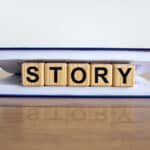1. Why Reflection Matters Now
A reflection essay is a compact laboratory in which you observe how your mind reacts to events, new information, and inner turbulence. When you compose one thoughtfully, you convert reactions into reason. You see cause, effect, and meaning in the same frame. You also catch subtle bias. In a noisy era of outrage and compressed attention, writing a reflective essay is a counter–cultural gesture of clarity and self–possession. It slows thought down just long enough for the honest signal to emerge.
The genre is short, but its impact can be feather–light or hammer–heavy depending on the moment you are capturing. Students in health sciences, humanities, design, and leadership programs are increasingly assigned reflective writing because it helps develop metacognition — the skill of seeing yourself thinking in real-time, then improving the quality of that thought. It is also why professional programs, such as nursing and social work, treat reflective writing as a skill worth developing across a career, not just a semester.
2. The Hidden Physics Of Meaning
A good reflective piece is not a diary. It is a meaning–making probe. You select just enough detail to make the learning moment tangible, then map the signal back to principle or theory. You choose the fragment that contains the whole. And the more precise the moment, the more transferable your learning becomes.
Cognitive science research suggests that memories stabilize more effectively when they are processed with elaboration — when they are re–encoded with richer context or personal significance. That is precisely what reflective writing does. It strengthens trace fidelity and helps future decision–making because more meaning is available to the future version of you.
3. The Tight Story Engine
A reflection essay gains power when you apply a simple narrative architecture: Event → Conflict → Turn → Lesson. You narrate the slice of experience, introduce the difficulty or contradiction, show the moment of shift, then articulate the enduring principle you extracted. This four–step engine prevents sprawling digression. It keeps you from drifting into memoir. It keeps the focus on transformation.
You can think of it like a micro case study. You are compressing a learning inflection point. And because reflection is recursive — you are thinking about how you felt — you get leverage for improvement. The same structural clarity that lifts a case study in strategy class will lift your reflective piece in philosophy or leadership.
4. Tone: Modest, Precise, Self–respectful
The most compelling reflective writing feels neither self–punishing nor self–aggrandizing. It feels humane — curious about its own errors, not ashamed of them. That stance of dignified candor is the rare emotional “middle gear” that lets insight breathe. As a craft move, avoid adjectives that exonerate you or condemn you. Favor verbs and specific sensory details.
Precision is proof of sincerity. Boredom is often the signal that the writer is hiding behind abstractions. Instead of “I learned to value empathy,” show one specific moment when your assumptions cracked. Instead of “This was difficult,” show the body sensation: a jaw muscle tightening, your eyes clicking off from contact.
5. Mechanical Steps That Raise Craft
A reflection essay should be short enough to reread in one sitting. For most assignments 600 to 900 words is the sweet spot. But the quality hinges on the drafting choreography: write fast, revise hard, title late. Nobody writes a crystalline reflective paragraph the first time through. But the second pass is where the gold appears.
Below is a reliable workflow:
• Write the event summary in 5 minutes (no polishing).
• Freewrite 5 minutes about the inner conflict.
• Draft 8 minutes on the turning moment.
• Draft 7 minutes on the takeaway concept or principle.
• Then CUT 40 percent. Remove throat clearing. Remove “what I plan to talk about” preambles. Remove moralizing. The reader will grant you every inch of respect you earn through specificity.
Revision is where meaning emerges. The less you announce, the more you reveal.
6. Scientific Baselines Worth Knowing
The architecture above is not an aesthetic whim. Three scientific baselines apply:
-
Reflective journaling is correlated with better affect regulation and goal progress.
-
Elaborative rehearsal strengthens recall by increasing contextual binding.
-
Reflection permits faster error model updating during future similar decisions.
A reflection essay is a low–friction container for those mechanisms. The exact number of tiny pages can produce a disproportionate lift in the following exam answer, subsequent design critique, or next difficult hallway conversation at work.
Because reflective writing is a tool for metacognitive tuning, it can help foster more resilient well–being, especially when done with perspective-taking, rather than rumination. Rumination loops. Reflection closes loops.
7. A Practical Template You Can Steal
Below is a flexible reflective writing template you can adapt in any course or project. It works because the proportions match the four–stage narrative engine without forcing you into a formula:
• Paragraph A = the specific event (40 to 80 words)
• Paragraph B = the contradiction or tension (80 to 120 words)
• Paragraph C = the pivot — moment of shift (80 to 120 words)
• Paragraph D = the durable principle (80 to 120 words)
Notice that this is not checkbox writing. It is proportion writing. By keeping each slice small, you raise the signal density. The reflective piece reads like a condensed case study, rather than a diary entry.
8. Why This Matters Beyond Grades
If reflection were merely an academic assignment, it would fade after graduation. But it is one of the single most recyclable thinking tools a human can practice. It is transferable. Leadership culture, high–stakes design review, elite coaching, and medical debriefings all utilize reflect–in–action and reflect–on–action as baseline cognitive hygiene.
In a fractured information environment, reflection is a way to disinfect meaning. It is how you run an epistemic virus scan on yourself. The reflective form keeps you humble enough to update and confident enough to keep moving. It is not therapy, but it is therapeutic. It is not philosophy, but it is philosophical. It is a compact crucible for better judgment.
9. How To Self–Grade Reflective Pieces
One underused technique for sharpening any reflection essay is adopting a self–grading heuristic before you submit. Pretend you are a reviewer paid per flaw found. For three minutes, annotate only for over-generalizations; then three minutes, annotate only for missing sensory detail; then three minutes review of the tight story engine: event, conflict, turn, lesson. This modular error–checking prevents global overwhelm and allows you to tighten just one vector at a time. The constraint forces productive scrutiny. In high–performance labs and elite sports coaching, this narrow–band diagnostic method is common because it reduces ego threat and increases fix–rate per editing minute when reflective writing becomes a laboratory of precise updating, not self-flagellation — your judgment compounds, that compounding is the real payoff of reflective craft: tiny cycles, large deltas.
Credible Research Links:
- https://www.sciencedirect.com/science/article/pii/S1871187122002535
- https://psycnet.apa.org/record/2017-37595-001
- https://www.frontiersin.org/articles/10.3389/fpsyg.2023.1195502/full





